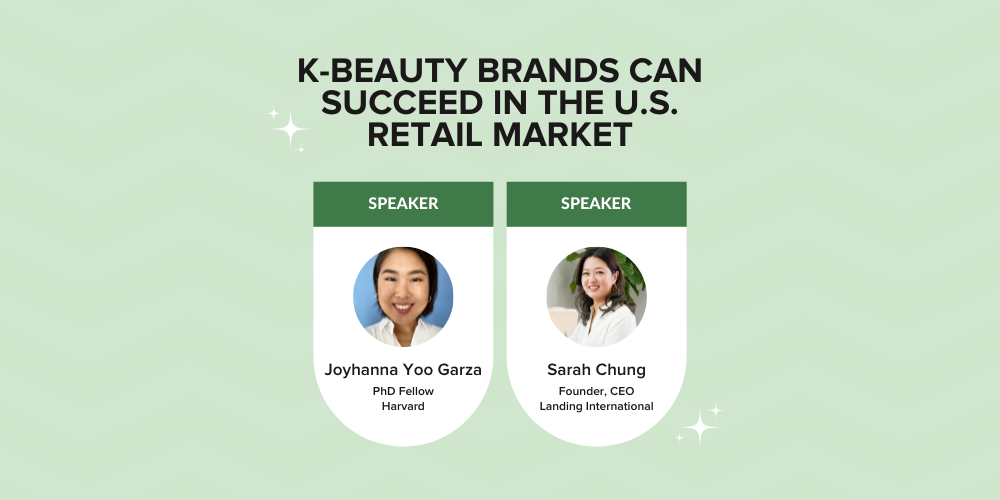
Since it first hit the American beauty scene in the 1980s with just a few large brands, K-Beauty has experienced an enormous surge in the U.S. market–reaching a peak between 2013 and 2017 when Korean exports to the United States increased by 389%. Today, the K-Beauty landscape in the U.S. market is experiencing a backslide with just 19 brands, operated by 13 companies, available in major beauty retailers like Ulta and Sephora. So what does the future look like for K-Beauty brands in the U.S. market, and how can smaller brands flex their resources to make inroads with the American customer?
This was the central question we explored in our recent webinar, How K-Beauty Brands Can Succeed in the U.S. Market, hosted by Landing CEO Sarah Chung and Harvard fellow Joyhanna Yoo Garza, whose academic research focuses on the language that Korean brands use to appeal to American consumers. For those that couldn’t join us, here are a few of the most important points we covered.
K-Beauty Is No Longer a Differentiator Because It’s Considered Mainstream
When looking back at the enormous popularity of K-Beauty brands in the late 2010s, many brands wonder why it seems so much harder to build momentum in the U.S. today. The fact is that being a K-Beauty brand is no longer a meaningful differentiator in the U.S. market because Korean-made products are now so widely accepted that the American customer no longer considers products that are made in Korea as different from products made in France, Canada or the U.S. While this dominant acceptance of Korean-made products is on the whole positive, it also means that K-Beauty has lost its novelty with American buyers.
Korean Brands Must Find Find Niche Appeal with American Consumers
Because the American beauty market is more competitive and crowded than ever, marketing your products to the widest consumer base is no longer a smart strategy. Instead, the brands that are winning in retail are actually those that target a much smaller segment. Speaking to specific skin concerns, purchasing values, or ingredient standards is a smart way for K-Beauty brands to build awareness and brand evangelism with a highly specific market segment before expanding into other areas.
Korean Brands Must Be English-First In Marketing
While American consumers are more engaged with Korean media than ever–from movies like Parasite, viral TV shows like Squid Game, and K-pop groups like BTS–American consumers still expect English to be the dominant global language and can feel confused and isolated when brands do not speak to them in English. This means it’s important for K-Beauty brands that are aspiring to U.S. success to not only develop clear English language packaging, but also a unique voice and tone in English and English-first marketing campaigns on social media.
Retail Success Requires Investment
Breaking into retail is only the beginning of the journey to success. While dozens of K-Beauty brands have made it into Ulta and Sephora, only 19 brands are still sold there. The reason? K-Beauty brands often fail to understand just how much they will need to invest in marketing in order to support sales in their U.S. channels. From retailer sampling programs to training in-store sales associates, succeeding at retail can come with a hefty price tag, especially in the first few years of business when the customer’s brand awareness is still low.
Curious to know what retail buyers at Ulta, Sephora and other leading retailers are looking for now and how Landing International can help? Click below to watch the full webinar and discover the four major trends that buyers are hoping to see from K-Beauty brands.
